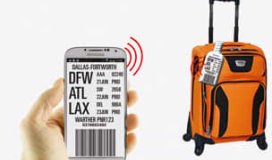Temperature-sensitive labels are the adhesive tags that display different colors that change at preset temperatures. In recent years, the manufacturers of these labels are making this as an aid to examine the temperature of transported and stored blood components. To discover this technology, a digital thermometer was used to measure temperature in 3 different locations inside the RBC containers. These containers were left to warm to the required temperatures followed by their refrigeration. Then, these container’s temperature readings were compared to the 3 temperature-sensitive labels for precise analysis.
These labels are used to alert the transfusion services if the temperature of the blood bags exceeds 10 degree Celsius. This temperature is the maximum acceptable limit by the American Association of Blood Banks and Food and Drug Administration for the transportation of RBCs. The contents of the refrigerated RBC units vary from constant to the variable temperatures at the time the containers are left to warm. As per the observation, the color-changes of the 3 temperature-sensitive labels were much similar with the surface temperatures of RBCs units.
Basically, a temperature-sensitive label system has a temperature-sensitive system having a filiform-shaped memory member having 2 ends. The first end has a terminal that is fixed to secure a first contact member while the second end portion comprises of a temporary second contact member with a curved portion. This central curved portion remains in the martensitic phase whereas the first & second portions remain in the austenitic phase.
Both operate at a temperature above critical threshold monitored by the temperature-sensitive label. The transfer from austenitic phase to martensitic phase causes irreversible disengagement by the second contact member. This disengagement can be seen through a transparent window or can be monitored by an advanced RFID system.
There are mainly 2 types of temperature-sensitive labels: reversible and irreversible. As their name implies, reversible labels can be changed to indicate the present temperature while the irreversible cannot. Non-reversible labels are used in the situation when either the operator is not available or don’t have access to the label attached to a product.
Today, there are many different types of temperature-sensitive labels available that are used for numerous daily life purposes. They are used with different healthcare shipments attached to the time and temperature-sensitive cargo. Their main purpose is to identify, classify and give information about the products. These temperature-sensitive labels have a variety of applications in shipping, storage, manufacturing and processing industries.



